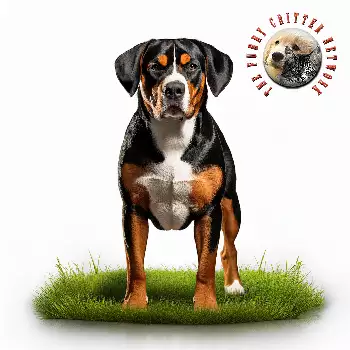The behavioral characteristics of the Entlebuch Cattle Dog reflect centuries of selective breeding for independent cattle management in the challenging Swiss alpine environment, resulting in dogs with exceptional analytical thinking abilities, strong decision-making skills, and complex personalities that require knowledgeable handling from their human companions. These dogs exhibit what experienced handlers describe as "working intelligence," meaning they naturally evaluate situations, consider options, and choose appropriate responses based on their assessment rather than simply responding to direct commands without thought.
This analytical approach to problem-solving distinguishes the Entlebuch Cattle Dog from many other breeds and can initially challenge owners unfamiliar with working dog mentality. When presented with a request or command, these dogs often pause to evaluate whether the action makes sense in their assessment of the situation before complying. This behavior reflects their heritage as cattle drivers who needed to make independent decisions about livestock management when working beyond their handler's direct supervision, often in life-threatening situations where poor judgment could result in injury or death.
The breed's energy levels remain consistently high throughout their adult lives, reflecting their development as tireless working dogs capable of maintaining effectiveness throughout extended periods of demanding physical activity. This high energy requirement extends beyond simple physical exercise to include substantial mental stimulation that challenges their intelligence and problem-solving capabilities. Entlebuch Cattle Dogs require activities that engage both their physical and mental capacities, such as complex training exercises, puzzle-solving games, and activities that allow them to use their natural instincts in appropriate ways.
Social behavior patterns in the Entlebuch Cattle Dog tend toward selectivity and caution, particularly when encountering unfamiliar people or situations. This natural wariness served them well in their traditional roles where the ability to distinguish between normal and potentially threatening situations could mean the difference between safety and danger for both the dogs and their livestock charges. While this caution is not fearfulness or shyness, it does mean that proper socialization from an early age is essential for developing appropriate social responses throughout their lives.
Within their family units, Entlebuch Cattle Dogs typically form intensely loyal bonds that reflect their heritage as close working partners with their human handlers. They often demonstrate what breeders call "velcro dog" tendencies, preferring to remain near their people and participating in family activities whenever possible. This strong attachment can sometimes manifest as separation anxiety when left alone for extended periods, requiring careful management and gradual conditioning to independence when necessary.
The breed's communication patterns include a sophisticated range of vocalizations, body language, and behavioral signals that reflect their development as working dogs who needed to communicate effectively with both their handlers and their livestock. While not typically excessive barkers, Entlebuch Cattle Dogs use their voices purposefully to alert, express needs, or communicate excitement. Experienced owners learn to interpret their dog's various sounds and their specific meanings, developing a communication partnership that enhances the human-dog working relationship.
Territorial behavior and protective instincts remain strong in modern Entlebuch Cattle Dogs, reflecting their historical roles as farm guardians who protected both livestock and property from various threats. These dogs typically maintain acute awareness of their environment and readily alert their families to unusual activities, visitors, or potential problems around their territory. However, their protective responses are generally measured and appropriate rather than aggressive, reflecting breeding selection for dogs capable of discrimination between real threats and normal activities.
Play behavior in the breed tends toward physical, interactive activities that challenge their athletic abilities and engage their natural instincts. They particularly enjoy games that involve problem-solving, such as hide-and-seek variations, puzzle toys that require manipulation to obtain rewards, and training exercises that present new challenges. Their herding instincts may manifest during play, especially when interacting with children or other pets, requiring supervision and appropriate redirection to ensure play remains safe and enjoyable for all participants.
The breed's learning patterns demonstrate their intelligence and retention capabilities, often mastering new skills after relatively few repetitions while maintaining learned behaviors over long periods without regular practice. However, their independent thinking nature means they may choose to modify learned behaviors based on their assessment of changing circumstances, requiring consistent training approaches that help them understand the reasoning behind expectations rather than simple rote compliance.
Stress responses in Entlebuch Cattle Dogs often manifest through increased activity levels, repetitive behaviors, or attempts to control their environment through organizing or herding activities. Understanding these stress signals enables owners to provide appropriate outlets for their dog's energy and mental needs while addressing environmental factors that may be creating pressure or anxiety. Proper management of stress factors contributes significantly to maintaining balanced, happy dogs who can fulfill their potential as companions and working partners.

